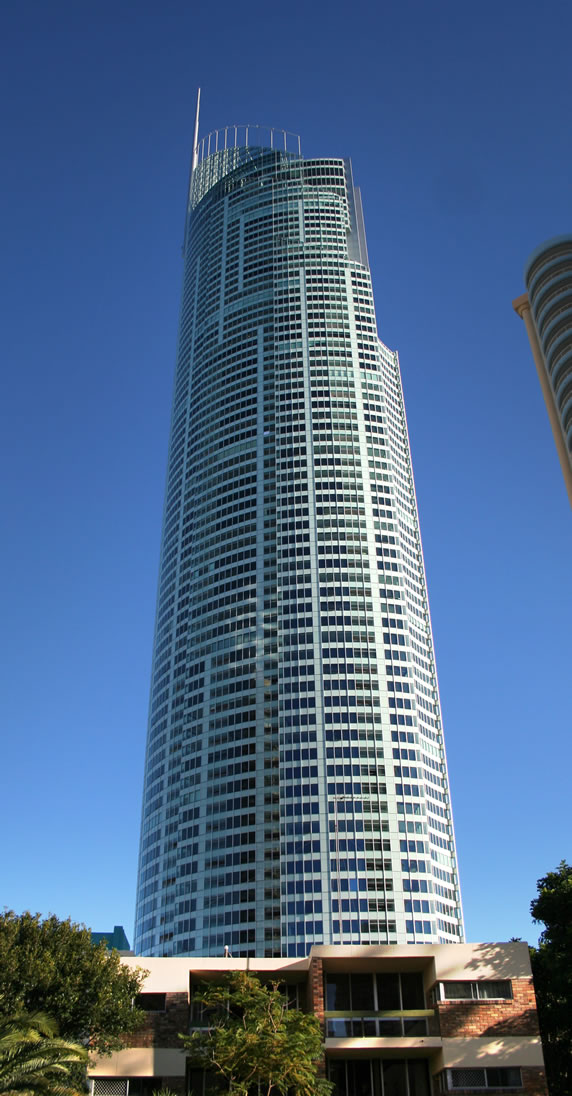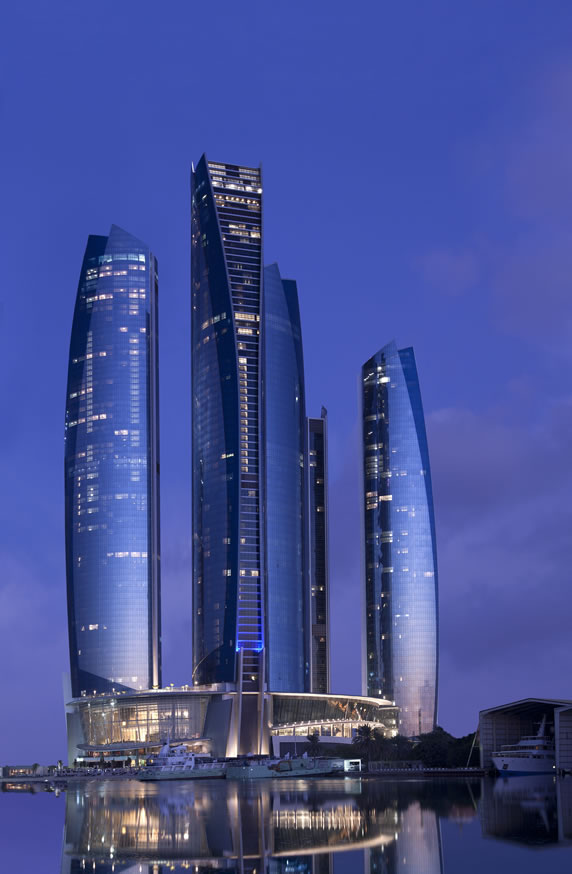Dubai currently dominates the market for living above the clouds. Seven of the ten tallest residential buildings in the world are located in the city on the Persian Gulf. The desire for recognition and prestige, plus the demonstration of economic growth, are the most significant factors leading to the boom in construction, particularly in the United Arab Emirates, of such gigantic apartment palaces.
A fifteen-minute walk is all that is needed to see the four tallest residential buildings in the world, as they are all – without exception – located in Dubai’s sought-after Dubai Marina district. You might not find any real princesses in Princess Tower, the world’s tallest residential tower block, but the 441- meter-tall skyscraper compensates through its dream location right on the beach with a view of the artificial island Palm Jumeirah. Second spot is occupied by the 395-meter-tall 23 Marina, while Elite Residence, at 380 meters, is the world’s third tallest
Outside of the United Arab Emirates, only two buildings make it into the Top 10 – Q1 Tower, on the east coast of Australia, and Capital City Moscow Tower, in Russia’s capital, Moscow. Q1 Tower, in particular, is not only remarkable for being the tallest skyscraper in the southern hemisphere, but can also show off a series of other impressive features: in addition to handsome outdoor terraces offering an stunning view of the Gold Coast from 180 meters’ and 230 meters’ height, a miniature rainforest, 30 meters high in total, was created in the form of a skygarden from the 60th to 70th floor. The tower also has an enormous steel spire that can be seen from up to 200 kilometers away and is illuminated at night.
The prerequisites for building giant residential palaces that dwarf all around them are particularly ideal in the Gulf Region. Firstly, there are sufficient providers of capital for major projects of this kind, and secondly, urban planning is not tied to preserving a distinctive existing skyline – meaning that such gigantic development projects can be given the green light.
Whether Dubai will continue to lead the list of the world’s tallest residential buildings in such convincing manner in the future, however, is debatable. In 2015, when the skyscraper World One is projected to be completed in Mumbai, India, this tower, planned at 442 meters’ height, will take over top spot. In addition, Diamond Tower, in Jeddah, Saudi-Arabia, at a projected 432 meters, and 432 Park Avenue in New York City (USA), at 426 meters in height, are also set to overtake the frontrunner from Dubai on their completion, thus raising the bar in the competition still further.
Princess Tower
Architect: Eng. Adnan Saffarini
Princess Tower houses between one and eleven apartments per floor for a total of 763 apartments, in which around 3,000 people live. The 414-meter-tall skyscraper is located in the Dubai district of Dubai Marina, which is near to the artificial island Palm Jumeirah and Burj al Arab. Photo credit: Michael Merola

23 Marina
Architect: KEO International Consultants
The 90-story apartment tower 23 Marina was the world’s tallest purely residential building for a few months until Princess Tower opened in summer 2012. 79 percent of the 291 apartments were already sold prior to the start of construction works in 2006. Photo credit: Alan Millin
Elite Residence
Architect: Eng. Adnan Saffarini
The tallest story of the 381-meter-tall building, Floor 91, is located at the height of 314 meters. The tower contains a grand total of 695 residential units. The floors of Elite Residences are square in shape, while at the top a crown, running to a point, provides a decorative finish to the building. Photo credit: Michael Merola
The Torch
Architect: Khatib & Alami
The Torch is a direct neighbor of Princess Tower in Dubai Marina. The final height of 336.8 meters was reached in February 2011 when the crown was placed on the tower. The building comprises 79 stories, over which 676 apartments are distributed. Photo credit: Michael Merola

Q1 Tower
Architects: The Buchan Group; Sunland Group Ltd.
Q1 Tower officially opened on October 26, 2005. At 323 meters, it was the first residential building to break the 1,000-foot mark. Among other features, it contains a rainforest with outdoor terrace, an observatory and Australia’s highest swimming pool. The tower’s spire, measuring 97.7 meters, is one of the longest in the world. It has a diameter of 1.8 to 8.0 meters and can be accessed from within. Photo credit: Michael Hierner
HHHR Tower
Architect: Al Hashemi
HHHR Tower is located on Sheikh Zayed Road, Dubai’s longest and best-known street. The tower’s 72 floors house 454 apartments. The facade of the concrete-frame skyscraper largely consists of blue glass, which is why the building is also nicknamed “Blue Tower”. Photo credit: Michael Merola
Ocean Heights
Architect: Aedas
Ocean Heights is a 310-meter-tall residential tower containing 519 apartments over 82 stories. The tower’s unique design, which can be described as a rising rotation, is the work of the world-renowned architecture practice Aedas. Photo credit: Michael Merola
Cayan Tower
Architects: SOM; Khatib & Alami Dubai
Each floor of Cayan Tower is rotated by 1.2 degrees. Thus the tower twists through 90 degrees as it rises, evoking the singular form of a helix. The skyscraper, which was known as “Infinity Tower” during its design and construction phases, contains just under 500 apartments over its 73 floors. Photo credit: Alan Millin

Etihad Tower 2
Architect: DBI Design (Pty Ltd)
Etihad Tower 2 is part of the five-building Etihad Towers complex in Abu Dhabi. In addition to three residential towers of varying heights, and an office tower, one of the towers is home to the Jumeirah Etihad Towers Hotel, a member of the international hotel chain Jumeirah Group. With its 79 stories, Etihad Tower 2 is the tallest of all the towers in the complex, and offers a total of 387 luxurious apartments. Photo credit: DBI Design
Capital City Moscow Tower
Architect: NBBJ
Capital City Moscow Tower is part of the Capital City complex, which is located on the left bank of the Moskva River in Moscow. The shape of the Capital City towers, which gives them the appearance of being made up of several “building blocks” stacked at angles on top of each other, mean they particularly stand out on the Moscow skyline. Photo credit: Igor Butyrskii
Source: Emporis

